
PPE for Power Tools: Enhancing Safety
Power tools are a boon for any DIY enthusiast or professional contractor. They expedite tasks, improve accuracy, and often deliver cleaner cuts. However, the very power that makes them efficient also introduces inherent risks.
To mitigate these risks and prioritize safety, utilizing the right Personal Protective Equipment (PPE) is paramount. PPE acts as a barrier between you and potential hazards associated with power tools. This article delves into the essential PPE you need to have on hand whenever wielding power tools or equipment.

Guarding Your Eyes: The Importance of Eye Protection
One of the most critical types of PPE for power tools is eye protection. Power tools can generate a barrage of flying debris – wood chips, metal fragments, dust particles – all capable of inflicting serious eye injuries.
There are three primary options for eye protection, each suited to varying situations. There are three primary options for eye protection, each suited to varying situations. For instance, safety goggles would be ideal when using an electric screwdriver to protect the eyes from potential flying debris.
- Safety Glasses: These lightweight and comfortable glasses offer basic protection from dust and debris. They are ideal for low-impact tasks like drilling or sanding.
- Safety Goggles: Goggles provide a more comprehensive seal around the eyes, safeguarding them from flying objects and liquids. Opt for goggles when working with power tools that generate a significant amount of dust or debris, such as saws and grinders.
- Face Shields: For maximum protection, particularly when there’s a risk of larger objects or sparks flying, consider a face shield. Face shields can be worn over safety glasses or goggles for additional security.
- When choosing eye protection, ensure it meets the American National Standards Institute (ANSI) Z87.1 standard. This guarantees the glasses, goggles, or shield can withstand the impact of high-velocity projectiles.
- Remember: Never underestimate the importance of eye protection. A single errant particle can lead to permanent vision loss. Don’t let a preventable accident sideline you from your project.

Keeping Your Hands Safe: Selecting the Right Gloves
Power tools can expose your hands to a variety of hazards, including cuts, abrasions, vibrations, and electrical shock. Choosing the appropriate gloes is vital for safeguarding your hands.
- Cut-Resistant Gloves: These gloves are constructed from Kevlar or other high-strength materials, offering exceptional protection against cuts and punctures. They are ideal for tasks involving sharp objects like blades or sheet metal.
- Vibration-Damping Gloves: Prolonged use of power tools can transmit vibrations to your hands, potentially leading to carpal tunnel syndrome or other nerve damage. Vibration-damping gloves lessen these vibrations, promoting comfort and reducing the risk of long-term injuries.
- Gripping Gloves: Certain power tools, especially those with smooth or wet handles, can be slippery. Gripping gloves enhance your grip, preventing accidental slips and potential tool loss.
- Electrician’s Gloves: When working with electrical power tools, prioritize insulated electrician’s gloves. These gloves are specifically designed to shield you from electrical hazards.
It’s important to select gloves that fit well and allow for dexterity. Ill-fitting gloves can hinder your ability to control the power tool safely, potentially increasing the risk of accidents.

Protecting Your Hearing: The Value of Ear Protection
Power tools are notorious for generating significant noise levels. Continued exposure to loud noises can lead to hearing loss, tinnitus (ringing in the ears), and other auditory problems.
Here are two primary options for ear protection:
- Earmuffs: Earmuffs completely enclose your ears, muffling loud noises. They are a good choice for most power tool applications.
- Ear Plugs: Earplugs are inserted directly into the ear canal, offering a more compact and portable solution. However, they may not provide the same level of noise reduction as earmuffs.
When selecting ear protection, consider the Noise Reduction Rating (NRR) of the product. The NRR indicates the amount of noise reduction provided by the ear protection. Higher NRR ratings signify greater noise reduction.
Remember, even short-term exposure to loud noises can damage your hearing. Don’t wait for symptoms to appear before taking action. Invest in proper ear protection and safeguard your hearing for the long haul.

Shielding Your Lungs: Utilizing Respiratory Protection
Depending on the power tool and the project, you may be exposed to dust, fumes, or other airborne contaminants. These contaminants can irritate your lungs and pose health risks.
Here’s when respiratory protection becomes crucial:
- Working with Dusty Materials: Sanding, grinding, and demolition work generate significant amounts of dust. A properly fitted respirator with a dust filter will prevent you from inhaling these harmful particles.
- Using Paint or Lacquer: These products often contain volatile organic compounds (VOCs) that can be harmful if inhaled. A respirator with a vapor cartridge can help filter out these VOCs.
- Working in Confined Spaces: working in confined spaces with limited ventilation, there’s a higher risk of inhaling hazardous fumes or dust. In such situations, a respirator with an appropriate filter or a supplied air system may be necessary.
When choosing a respirator, ensure it fits snugly and creates a proper seal around your face. A loose-fitting respirator won’t be effective in protecting your lungs. Additionally, select a respirator with the appropriate filter for the specific contaminant you’ll be encountering.
It’s crucial to follow the manufacturer’s instructions for proper use, maintenance, and storage of your respirator.
Keeping Your Head and Feet Safe——power tools: Additional Considerations
While eye, hand, hearing, and respiratory protection are essential, there are other types of PPE to consider for comprehensive safety:
- Hard Hats: These helmets shield your head from falling objects, a common hazard in construction zones or when working overhead.
- Safety Footwear: Sturdy safety boots with slip-resistant soles provide traction and protect your feet from falling objects or accidental punctures.
- Respirators: As mentioned earlier, respirators are crucial for specific tasks involving dust, fumes, or VOCs.

Safety First: A Consistent Approach——power tools
Using PPE is just one aspect of a safe power tool operation. Here are some additional safety practices to remember:
- Read the manual: Before using any power tool, thoroughly read the manufacturer’s instructions. Familiarize yourself with the tool’s proper operation, safety features, and recommended PPE.
- Inspect the tool: Prior to each use, inspect the power tool for any damage to the cord, plug, blades, or other components. Never use a faulty tool.
- Maintain a clean workspace: Keep your work area clear of debris and clutter to prevent tripping hazards and ensure you have ample space to maneuver the tool safely.
- Turn off and unplug: Always turn off and unplug the power tool when not in use, or when changing blades or attachments.
- Never force it: If a power tool binds or becomes difficult to operate, turn it off and troubleshoot the issue. Don’t attempt to force it through.
By prioritizing safety and utilizing the appropriate PPE, you can minimize the risks associated with power tools and ensure a successful and injury-free project.




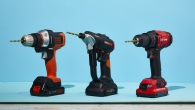
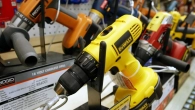
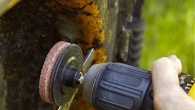
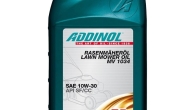
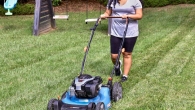
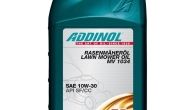

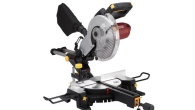
Leave a Reply